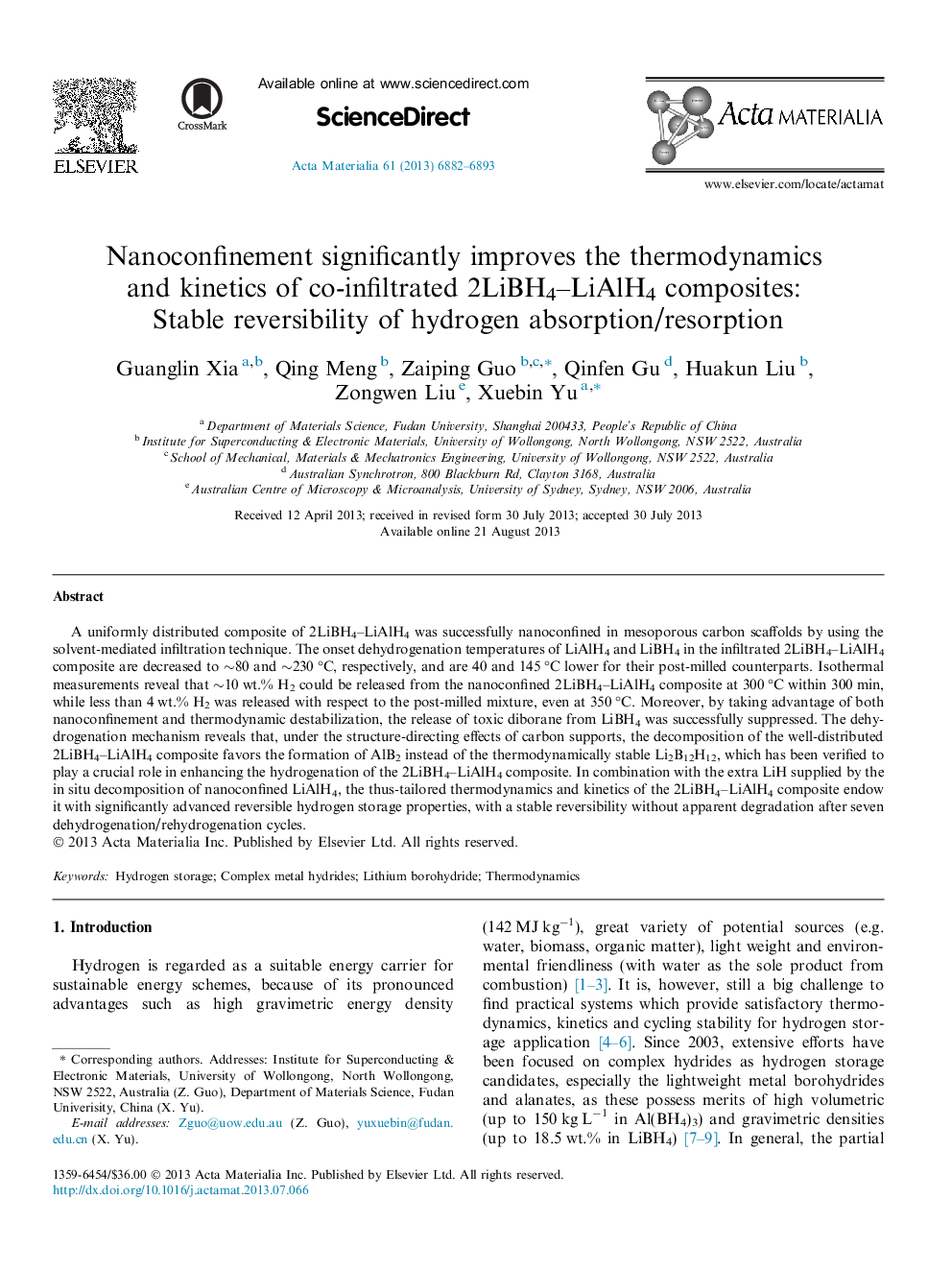| Article ID | Journal | Published Year | Pages | File Type |
|---|---|---|---|---|
| 1445741 | Acta Materialia | 2013 | 12 Pages |
A uniformly distributed composite of 2LiBH4–LiAlH4 was successfully nanoconfined in mesoporous carbon scaffolds by using the solvent-mediated infiltration technique. The onset dehydrogenation temperatures of LiAlH4 and LiBH4 in the infiltrated 2LiBH4–LiAlH4 composite are decreased to ∼80 and ∼230 °C, respectively, and are 40 and 145 °C lower for their post-milled counterparts. Isothermal measurements reveal that ∼10 wt.% H2 could be released from the nanoconfined 2LiBH4–LiAlH4 composite at 300 °C within 300 min, while less than 4 wt.% H2 was released with respect to the post-milled mixture, even at 350 °C. Moreover, by taking advantage of both nanoconfinement and thermodynamic destabilization, the release of toxic diborane from LiBH4 was successfully suppressed. The dehydrogenation mechanism reveals that, under the structure-directing effects of carbon supports, the decomposition of the well-distributed 2LiBH4–LiAlH4 composite favors the formation of AlB2 instead of the thermodynamically stable Li2B12H12, which has been verified to play a crucial role in enhancing the hydrogenation of the 2LiBH4–LiAlH4 composite. In combination with the extra LiH supplied by the in situ decomposition of nanoconfined LiAlH4, the thus-tailored thermodynamics and kinetics of the 2LiBH4–LiAlH4 composite endow it with significantly advanced reversible hydrogen storage properties, with a stable reversibility without apparent degradation after seven dehydrogenation/rehydrogenation cycles.
